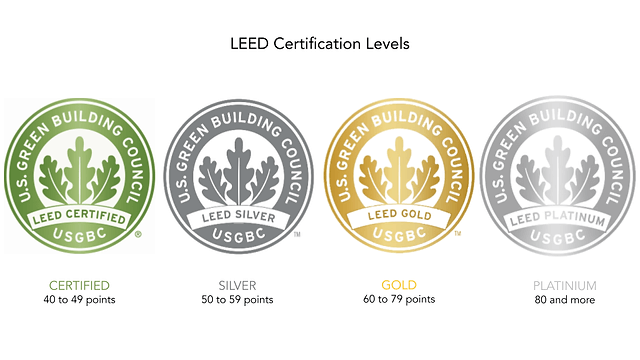The Benefits of Going Green with LEED

Leadership in Energy and Environmental Design (LEED) is a globally recognized rating system that quantifies the environmental friendliness of a building. According to the U.S. Energy Information Association, residential and commercial building sectors accounted for 39% of total energy consumption in 2021, so it’s important to try to mitigate the carbon footprint of each new building. Not only are LEED-certified buildings beneficial for the environment, but they also benefit building owners, contractors, and occupants.
Environmental Benefits The U.S. Green Building Council developed LEED with the goal of:
● Reducing contributions to climate change
● Protecting and restoring water resources
● Promoting sustainable material cycles
● Enhancing human health
● Protecting biodiversity and ecosystems
● Enhancing community quality of life
Because of these goals, all LEED-certified buildings are much better for the environment than non-LEED buildings. LEED buildings emit 34% lower CO2 emissions and consume 25% less energy and 11% less water than other buildings.
Occupancy Benefits
Tenants who live or work in LEED-certified buildings enjoy the environment they are in because of the improved air quality inside the building. Because LEED is careful about the paint and finishings used in the building, there are no harmful chemicals for the occupants to worry about, so the air is cleaner than other buildings. According to the U.S. Green Building Council, employers in LEED-certified spaces found that their employees were more productive, and they experienced high recruitment and retention rates.
Owner Benefits
Because LEED-certified buildings are in high demand, owners can rent or sell for higher prices than other buildings. According to Cushman and Wakefield, LEED-certified buildings consistently average over 11% higher rent than other buildings. In this post-pandemic period, LEED buildings have lower vacancy rates than non-LEED buildings. LEED-certified buildings can also qualify for tax cuts, which appeals to owners.
Contractor Benefits
As owners become more aware of the benefits of LEED-certified buildings, the demand for these buildings continues to grow. There is also no shortage of work in the sustainable building industry, as the green building market doubles every three years, according to the World Green Building Trends 2021 report. Becoming LEED accredited can give contractors a competitive edge over others. Having a LEED accreditation also gives contractors access to the latest information on green building techniques, which is appealing to potential customers.
Interested in a LEED Accreditation?
Contractors who are interested in becoming LEED-certified can register for an accreditation exam through the U.S. Green Building Council’s website. The LEED Green Associate exam costs $250 and contains 100 multiple-choice questions. The USGBC site also contains study materials, example test questions, and more.
